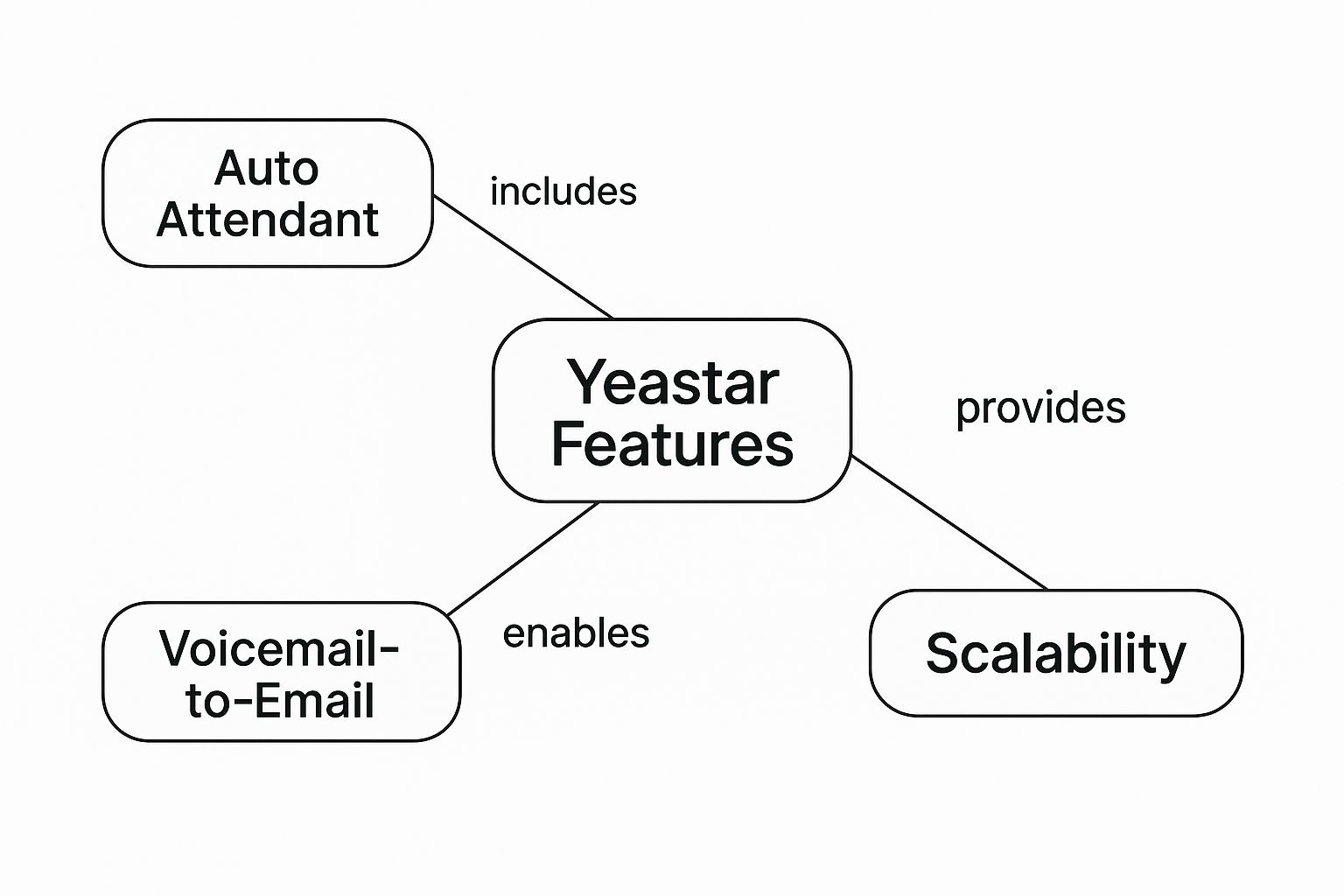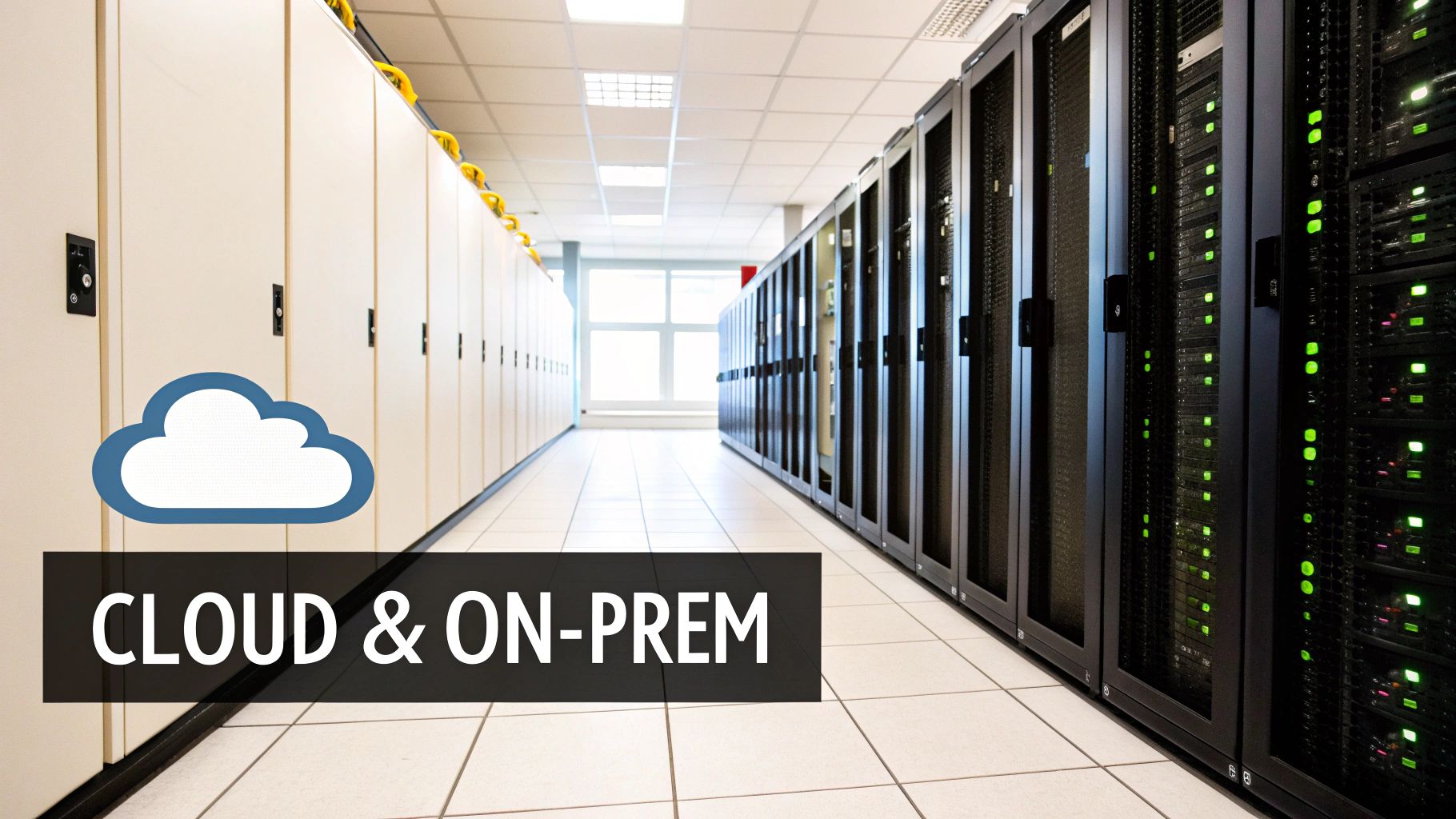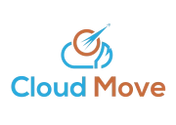At its most fundamental level, a Yeastar phone system is a comprehensive unified communications platform. It’s built to bring every piece of a company’s voice, video, and messaging together under one roof, acting as an intelligent hub that replaces clunky, outdated phone closets with a modern, flexible solution.
What Exactly Is a Yeastar Phone System?

Think of your company's communication as its central nervous system. In that analogy, the Yeastar system is the brain, intelligently directing every call, video conference, and instant message exactly where it needs to go. This isn't just about making and taking calls anymore; it's a complete platform designed from the ground up to solve real-world business communication problems.
For a lot of businesses here in the UAE, making the switch means finally moving on from rigid, traditional phone lines to a system that actually supports modern realities like growth and remote work. The platform was engineered for versatility, and its flexible deployment models are a big part of why it's gaining so much traction.
Its Core Purpose and Business Value
At its heart, the system is a powerful IP PBX (Private Branch Exchange). Essentially, it creates a private, internal telephone network just for your organization, unlocking advanced features that you simply can't get from standard phone lines. The real value, though, comes from pulling all your separate communication channels into a single, easy-to-manage interface.
Here’s a quick look at the core functions that make the Yeastar platform so powerful.
Yeastar Phone System Key Capabilities
| Feature Category | Description | Primary Business Benefit |
|---|---|---|
| Unified Communications | Consolidates voice, video, messaging, and presence into one cohesive platform. | Improves team collaboration and productivity by eliminating the need to juggle multiple apps. |
| Advanced Call Handling | Includes features like IVR, call routing, queues, recording, and voicemail-to-email. | Creates a more professional image and ensures no customer call gets lost or mishandled. |
| Mobility and Remote Access | Provides mobile and desktop apps (Linkus UC Clients) for seamless work-from-anywhere. | Empowers a flexible, hybrid workforce without sacrificing communication quality or security. |
| Scalability | Easily add or remove users, lines, and features as business needs change. | Offers a future-proof solution that grows with your company, protecting your initial investment. |
As you can see, the goal is to give businesses a practical, powerful toolkit to improve how they connect with customers and each other.
The Yeastar philosophy isn't just about throwing technology at a problem. It's about creating a practical path to modern communications. By integrating tools like intelligent call routing, voicemail-to-email, and powerful mobile apps, it empowers businesses to be more professional and incredibly responsive.
For businesses looking into specific deployment options, you can get more details on the https://cloud-call-center.ae/yeastar-cloud-pbx/ to see how a hosted solution can simplify management even further. At the end of the day, putting a Yeastar system in place is a strategic investment in your company’s operational efficiency and ability to adapt to whatever comes next.
Choosing Your Yeastar Deployment Model
Picking the right deployment model for your Yeastar phone system is one of the most critical decisions you'll make at the outset. It’s a lot like choosing where to live; your specific needs for control, convenience, and long-term flexibility will point you toward the best fit. Yeastar truly shines here, offering its P-Series PBX System in three distinct models to match just about any business strategy.
On-Premises vs. Cloud: A Tale of Two Philosophies
Let's start with the two most common paths. Think of an on-premises deployment like owning your own house. You have complete, hands-on control. The hardware sits right there in your office, managed by your team. This model is a natural fit for businesses with a dedicated IT staff who prefer to keep their infrastructure in-house, giving them total command over their data and system configurations.
On the other hand, the Cloud Edition is more like leasing a premium, fully-serviced apartment. Yeastar, or one of its partners, handles all the infrastructure, maintenance, security, and updates behind the scenes. This approach is fantastic for scalability and frees you from the complexities of managing hardware, making it perfect for companies that want to focus on their business, not their phone system.
Each model brings its own set of advantages to the table. An on-premises solution delivers ultimate control, while the cloud offers unmatched convenience and agility.
- On-Premises Appliance (P-Series PBX): This is a physical piece of hardware that you own and operate. It’s the ideal choice for organizations that need absolute authority over their communications and have the internal resources to manage it effectively.
- Cloud Edition (Hosted by Yeastar or a Partner): With zero hardware to install, you get a completely managed solution. This is the go-to for businesses looking for quick deployment, predictable monthly costs, and the freedom to scale services up or down as needed.
No matter which path you take, the core experience remains consistent. The infographic below shows how essential Yeastar features are delivered across the board.

As you can see, powerful capabilities like Auto Attendant, Voicemail-to-Email, and Scalability are baked into the Yeastar DNA, ensuring a high-performance system regardless of the deployment model.
The Software Edition and Shifting Market Trends
There's a third option that offers a unique blend of control and flexibility: the Software Edition. This is like buying a plot of land and using your own architect and builder. You can install the Yeastar software on your own servers or within your private cloud environment (like AWS or Azure). This gives you maximum customization, perfect for businesses with specific virtualization needs or strict data residency policies.
It's impossible to ignore the powerful shift toward cloud-based solutions, particularly in this region. The hosted PBX market in the Middle East & Africa is on a trajectory to hit USD 2.55 billion by 2030. This incredible growth is fueled by UAE businesses moving toward more agile communication platforms that can support remote work and integrate seamlessly with tools like Microsoft Teams.
Yeastar's cloud-first and hybrid offerings are perfectly positioned to meet this demand, which already sees hosted solutions accounting for over 56% of market revenue. You can dive deeper into these trends in the full hosted PBX market research from Grand View Research.
By providing on-premises, cloud, and software options, Yeastar ensures that every business—from a lean startup to a large enterprise with a robust IT department—can find a deployment model that aligns perfectly with its budget, technical resources, and strategic goals.
Ultimately, getting a firm grip on the differences in control, maintenance, and cost is the key. It will give you the confidence to select the Yeastar deployment that best supports your IT strategy and business objectives.
Unlocking Core Communication Features

A phone system is only as good as the tools it gives your team. While many platforms boast a laundry list of features, the Yeastar phone system zeroes in on what actually moves the needle for daily productivity and customer happiness. This is about more than just making calls; it's about building a connected and efficient workspace.
The heart of this modern approach is the Linkus UC Clients. Think of Linkus as your desk phone, but liberated. It's a powerful app that lives on your laptop and smartphone, freeing your employees from their physical desks. They can make, take, and manage business calls from literally anywhere.
Imagine a sales rep visiting a client across the country—their business line is right there on their mobile. Or a support agent working from a home office—they have full, seamless access to the company's phone network. Linkus provides that professional front, no matter where work gets done.
Empowering Your Frontline Staff
Your receptionist is the face of your company, and Yeastar gives them the tools to match that responsibility. The intuitive operator panel is essentially a command center for call traffic, built for busy environments. It gives operators a bird's-eye view of incoming calls, who's available, and what's happening in every queue.
Instead of fumbling with cryptic codes, a receptionist can see an employee is on another call and simply drag and drop the new caller to the right person or voicemail. This kind of smooth operation isn't just an internal win; it creates a polished, professional experience for every single person who calls you.
A Yeastar phone system transforms communication from a simple utility into a strategic asset. By equipping teams with tools like the Linkus mobile app and a visual operator panel, it empowers them to be more responsive, organized, and effective in their roles.
This focus on smooth operations also applies to how the system handles calls before a human even picks up.
Advanced Routing and Intelligent Call Queues
Nobody likes being bounced between departments or stuck in a hold loop. The Yeastar phone system tackles this head-on with smart call routing and queue management. You can set up sophisticated rules that direct calls based on the time of day, the caller's number, or the menu options they choose.
For example, a call after 5 PM can automatically go to a specific voicemail, while a call from a VIP client can be sent straight to their account manager’s extension. The system's toolkit includes:
- Skill-Based Routing: Sends callers to the agent best suited to help them, whether it's based on language, product knowledge, or technical skill.
- Queue Call-Back: Gives callers the choice to hang up and get a call back when it's their turn, which is a massive upgrade to the customer experience.
- Wallboard and Analytics: Offers managers real-time data on queue wait times, agent status, and call volume, making it easy to adjust resources on the fly.
For businesses that run a dedicated contact center on their Yeastar system, digging into strategies for call center cost reduction can unlock even more value. By automating call distribution and giving agents better tools, you can handle more calls more effectively, turning a cost center into a hub of customer loyalty.
Integrating Yeastar with Your Business Tools

A phone system shouldn't be an isolated island in your tech stack; it needs to be a bridge. The real magic of a Yeastar phone system isn't just in the calls themselves, but in how it talks to the software you already use every day. This creates a single, seamless workflow that cuts down on friction and really helps your teams get more done.
Think about it: instead of toggling between different apps all day, your team can work much more intelligently. That means less time wasted on tedious data entry and more time focused on what matters—your customers. It’s about building a communications ecosystem where information just flows, connecting your phone system with your most essential business tools.
For any modern business here in the UAE, this level of connectivity is no longer a "nice-to-have." It's an absolute must, especially with teams relying so heavily on collaborative platforms to work effectively.
Native Microsoft Teams Integration
If your organization lives and breathes in Microsoft Teams, Yeastar's native integration is a game-changer. It lets your staff make and receive external business calls right from the Teams interface they already know, whether they're on a desktop or a mobile device. No more juggling a separate phone app; everything stays in one place.
Yeastar made a smart move back in June 2020 by integrating its core PBX products with Microsoft Teams, right when the world was pivoting hard to remote and hybrid work. This was a big deal, particularly in the UAE where Teams adoption is so high. It essentially gives companies the best of both worlds: the robust features of their Yeastar PBX working inside the collaboration hub their teams are already comfortable with. The growth in this space is clear, as shown in the Global Call Control Market projection report.
Supercharging Your CRM
One of the most powerful connections you can make is between your phone system and your Customer Relationship Management (CRM) software. The Yeastar platform plays nicely with the biggest names in the CRM world, including:
- Salesforce: Automatically log every call, pop up new contact forms, and instantly view customer records when the phone rings.
- Zoho CRM: Get handy screen pops for incoming calls, use click-to-call straight from your contact lists, and keep detailed call journals without lifting a finger.
- Microsoft Dynamics 365: Keep your contacts synchronized and automate call activity logging to maintain a perfect, up-to-date customer history.
This simple link-up turns your phone system into a powerful sales and service engine. When a customer calls, your agent instantly sees their entire history on screen. That means every conversation is personal and productive from the very first hello.
This idea of a unified workspace goes beyond just voice calls. Many businesses are now bringing other communication methods into the fold. For instance, a WhatsApp Business solution can integrate another hugely popular channel directly into your contact center. When you centralize every interaction like this, you create a complete, 360-degree view of the customer journey, ensuring no detail is ever missed.
How Yeastar Competes in the UAE Market
In the bustling UAE business world, a Yeastar phone system has carved out a unique space for itself. It stands as the smart, powerful choice, especially for the small and medium-sized enterprises (SMEs) that form the backbone of the local economy. While tech titans like Cisco and Avaya often focus on large corporations with deep pockets and complex demands, Yeastar takes a refreshingly different path.
You could think of it like this: Cisco and Avaya are the custom-built supercars of the telecom world—immensely powerful but often complex and expensive. Yeastar, on the other hand, is the high-performance luxury sedan. It delivers an exceptional experience and robust features but is far more accessible, user-friendly, and practical for everyday business needs. That’s precisely Yeastar's sweet spot.
Its appeal really boils down to three core strengths: it's cost-effective, incredibly easy to use, and offers flexible deployment options. For any growing business in Dubai or Abu Dhabi, getting access to a feature-packed communication platform without a huge upfront cost is a game-changer.
A Smart Choice for Regional SMEs
The IP PBX market across the Middle East & Africa is on a steep growth curve, projected to climb from USD 32.2 billion in 2025 to USD 87.2 billion by 2035. While major vendors like Cisco command a 20-25% market share, Yeastar thrives in the substantial 'other players' segment, which accounts for a significant 20-30% of the market. This segment is almost entirely driven by SMEs searching for real value, and with the UAE seeing a 15-20% adoption rate of cloud PBX services, Yeastar is perfectly positioned. Its affordable hybrid models and seamless SIP compatibility meet this growing demand head-on. For a deeper dive, you can explore the data in this detailed IP PBX market report from Future Market Insights.
What’s more, Yeastar’s simple, intuitive web interface means you don’t need a dedicated team of IT wizards to manage your phone system. This self-sufficiency is a massive plus for any SME trying to stay nimble and keep operational costs in check.
Yeastar's strategy isn't about trying to outspend the giants—it's about out-smarting them. It delivers 80% of the high-end features you'd expect, but at just 20% of the complexity and cost. That's a value proposition that's hard for any SME to ignore.
This approach also makes it the perfect upgrade for businesses looking to move on from older, legacy phone systems. Because it works so well with standard SIP protocols, companies can often reuse their existing IP phones and migrate to a modern VoIP setup gradually. This avoids the pain and expense of a full "rip-and-replace" project. This flexibility is especially valuable when tying into other business tools. To see this in action, check out our guide on adding a robust voice solution to the Microsoft Teams platform.
It's this strategic positioning that makes the Yeastar phone system such a strong and respected competitor in the region.
Common Questions About Yeastar Systems
When you're looking at a new communication platform, questions are a good thing. It means you're doing your due diligence. Getting clear, straightforward answers is what turns a potential investment into a confident decision.
This section tackles some of the most common questions we hear about the Yeastar phone system. We'll cover security, hardware compatibility, and day-to-day management to give you a real feel for how the platform works in a practical business setting.
How Does Yeastar Handle Security?
In any business, protecting your conversations and data is non-negotiable. A Yeastar phone system is built with a multi-layered security strategy, designed to safeguard your communications from every angle. It’s not about one single feature, but a whole set of tools working in concert.
Think of it like securing a physical building. You wouldn't just rely on a lock on the front door. You’d have a gate, security patrols, and surveillance cameras. Yeastar takes a similar, comprehensive approach to your communication network.
Security isn't an add-on; it's baked into the Yeastar platform from the ground up. By combining a robust system firewall, automatic IP blacklisting, and end-to-end encryption, it creates a secure environment for all your business communications.
This built-in defense is designed to head off common cyber threats and keep your calls and data confidential. Here’s a quick look at how the key pieces work together:
- Built-in Firewall: This is your first line of defense. It acts as a gatekeeper, controlling all traffic moving in and out of your phone system and automatically blocking suspicious activity before it can cause trouble.
- IP Address Blacklisting: If the system detects malicious behavior, like repeated failed login attempts from a specific IP address, it automatically blocks that address to prevent any unauthorized access.
- TLS and SRTP Encryption: These protocols work together to protect your conversations. TLS scrambles the call signaling (the "who, what, and where" of the call), while SRTP scrambles the actual audio, making it unreadable to anyone who might try to intercept it.
These features form a secure foundation, giving you the confidence that your sensitive business discussions are properly protected.
What Hardware Works With Yeastar?
One of the biggest worries when switching phone systems is the potential cost and headache of replacing all your existing hardware. This is where the Yeastar platform really shines, offering a ton of flexibility and real opportunities for cost savings.
Because the system is built on open SIP (Session Initiation Protocol) standards, it’s brand-agnostic. This simply means it’s designed to work with a huge range of IP phones, gateways, and other devices from hundreds of leading manufacturers.
This compatibility is a major plus. For many businesses, it means you can keep using your current SIP-compliant desk phones, which can dramatically lower the upfront investment needed for an upgrade. In fact, Yeastar supports auto-provisioning for over 400 mainstream phone models, making the physical setup process incredibly simple.
But what if you have older, non-IP equipment? Yeastar has a solution for that, too.
- VoIP Gateways: Think of these devices as translators that bridge the gap between old and new technology. Yeastar’s TA Series gateways, for instance, can connect legacy analog phones or traditional ISDN lines directly into your modern IP PBX.
- Gradual Migration: This approach lets you upgrade your communication system in phases. You can keep using older equipment where it makes sense while rolling out new IP phones over time, making the transition much easier on your budget.
This flexibility ensures you’re never locked into a single hardware vendor. You get to build a system that works for your business, your budget, and the equipment you already own.
Is Managing a Yeastar System Difficult?
Let's be honest: many powerful business systems are a nightmare to manage, often requiring a dedicated IT specialist just to handle day-to-day changes. The Yeastar phone system was specifically designed to break that mold. The priority is a user-friendly experience for administrators, regardless of their technical background.
Everything is managed through a clean, intuitive web-based interface. From this one portal, an administrator can oversee the entire system without ever touching a command line or needing deep technical knowledge.
The whole point is to put you in control. The graphical interface makes essential tasks quick and painless.
- Adding or Removing Users: Onboarding a new employee or reassigning an extension is a matter of a few simple clicks.
- Configuring Call Flows: Need to set up an auto-attendant menu ("Press 1 for Sales…") or create new call routing rules? It’s all done through a straightforward, visual process.
- Monitoring System Status: A central dashboard gives you a clear, at-a-glance overview of your system's health and call activity.
This commitment to simplicity means that for many small and medium-sized businesses, the person managing the office can also manage the phone system. It lowers the barrier to entry and reduces ongoing operational costs, freeing up your valuable IT resources to focus on bigger-picture initiatives.
Ready to see how a modern, secure, and easy-to-manage communication platform can transform your business? Cloud Move offers expert consultancy and a free demo to show you the Yeastar system in action. Discover a better way to connect with your customers and teams.




